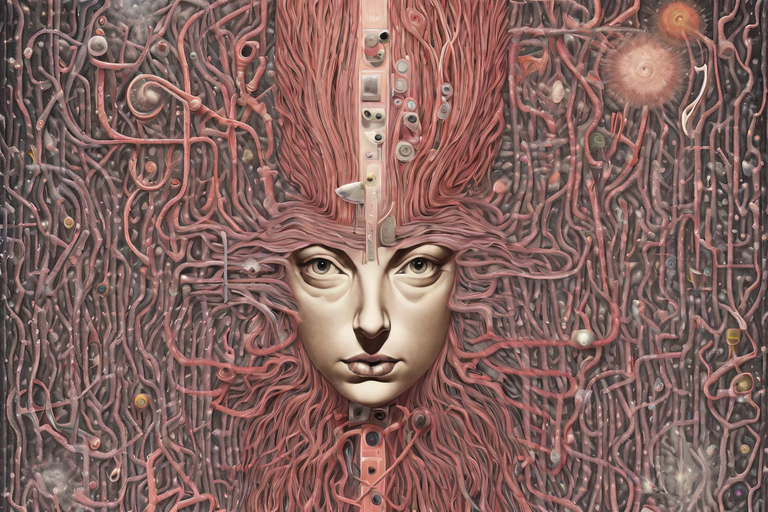The state of acceptance can never be reached by rejecting our non-acceptance. This is obvious. Although there is no method for becoming self-accepting however this is not to say that there isn’t an art of self-acceptance. But what does it mean to say that something is an art? If something is an art then there are no defined steps to it, no rules to follow, and no ‘right way’. There is no strategy. Furthermore, we can say that it is something that every person has to learn for themselves and, conversely, it is something that no one else can tell us how to do. Essentially, it is our own discovery and it has to be re-discovered afresh for each person. So if I discover for myself the art of gentle self-acceptance (or any other art, for that matter) I can’t explain it to you in five minutes so that you can master the art too – in fact I can’t explain it at all. All I can do is practice it for myself.
This is exactly like being patient. Just because you have discovered how to be patient, that doesn’t mean that you can explain how to be patient to me, not if you keep at it all year. It’s not in the explaining! An art, therefore, is something that is not in the explaining. It’s not a strategy. It is unique to each person and because it is unique (rather than being standardized or regular) there can be no such thing as a method for attaining it. Methods are only for things that are the same for everybody, like baking bread – and even baking bread has more than a bit of an ‘art’ in it!
Even though self-acceptance is an art and not a technique or a strategy or a method this does not mean that we can’t start off with a sort of a method. All arts start with a basic discipline (or ‘practice’) of one sort or another, the only thing being that the method we start off with is provisional – in other words, it is just something to get us going and not an end in itself. At the same time, it is very important because without it we won’t be able to start. This is like learning the rules of grammar and basic sentence construction – if I am in a hurry to become a great writer then I might not want to bother learning the basic rules, after all if James Joyce didn’t need to obey the rules of grammar then why should I? But James Joyce was only able to go beyond mere technique because he had already mastered it – he started off the same as everyone else, having to learn the A, B, C of it all. The same is true for music, oil-painting, furniture-making, flower arranging, poetry, and any other art you can mention – we start off more-or-less copying something outside of us (a defined process) and then later on when we gained confidence we move on to the next stage, which is bringing ourselves into what we are doing and letting go of our tight hold on the guidelines.
One way to start practising the art of gentle acceptance is by paying careful attention to the relationship that we have with our pain. If I am feeling bad in some way then obviously I know that I am feeling bad – if I didn’t know that I was feeling bad then I wouldn’t be feeling bad! It sounds a bit silly to say this but it is important all the same because this ‘knowing that I am feeling bad’ is my relationship with my inner pain. If I didn’t have that relationship then I wouldn’t have anywhere to start with this ‘acceptance practice’. I probably wouldn’t feel that there was any point in practicing acceptance either and so the question of ‘where to start’ wouldn’t arise in the first place. But if I do feel sad or anxious or uneasy or guilty or ashamed or uncomfortable or whatever it is that I feel then that is what I start with – with the relationship that I have with this feeling.
When I start paying attention to how I am relating to my inner pain (whatever that inner pain may be) what I notice is that I am continually trying to not relate to this pain. In other words, I see that I am continually trying to distract myself from the pain in some way. There are many ways in which I could be trying to do this – there are many styles of self-distraction. I might be attempting to think of something else. I might be trying to figure out a way of solving the pain, or escaping from it. I might be telling myself how terrible it is. I might be thinking that it isn’t right for me to be feeling like this, that I shouldn’t be feeling like this. I might be complaining. I might be blaming myself or others for the fact that this is happening to me. I might be getting angry with the pain, or whatever caused the pain. I might be envious of those who are not in pain. I might be closing down mentally, switching off. It doesn’t matter what way I have of trying not to relate to my pain, I just notice myself doing it.
Self-distraction is a way of ‘not being there’. Each one of us has a whole range of tricks or methods or techniques of not being there, of not relating to what is going on. One person might have one way which is their habit, someone else will have another. It doesn’t really matter what habitual reaction I have because they all come down to the same thing – they all have the same function. All I have to do is to pay attention to myself reacting, when I do react, so that I can see it. This is trickier than it might sound since the whole point of ‘reacting’ is to divert or displace our attention away somewhere, to ‘throw it off the scent’ so to speak. The key is, therefore not to get sucked up in the distraction mechanism in the way that I normally would. I have to observe it rather than get caught up in it, which is going against the grain. This is going against the whole principle of distraction.
The basic practice that we are talking about involves ‘spotting the trick’ – it involves me catching myself out in my habitual (which is to say, automatic) attempt to distract myself from whatever mental pain it is that I am suffering from. This has nothing to do with changing the automatic response, or blaming yourself for having it – which is of course what tends to happen – but simply seeing it going on. Seeing myself automatically distracting myself from whatever it is that I want to be distracted from is of course a very powerful thing in itself because once I see this process going on I can no longer take the distraction seriously. The automatic distraction process will continue because it is a long-standing habit and it has its own energy but the important thing is precisely that I am no longer taking it seriously and so even though I am still ‘going through the motions’ I am no longer feeding the habit.
As we have said, there are many styles of self-distraction. Just to give one simple example here – suppose I am feeling hurt in some way, and I allow myself to be irritated by something that has nothing to do with what is really bothering me. In this case I am distracting myself from what is really getting to me and as long as I ‘buy’ into the story – that the thing which is annoying me is the real problem and therefore wholly deserving of my irritation – then I am feeding the mechanical pain-avoidance process and making it impossible for me to see the truth. But if I don’t get sucked into this ‘cover story’, this justification of what I am doing, then I am ‘being there in my not being there’, I am being ‘present in my absence’ and so I am genuinely practising mindfulness. Again, it is important to point out that this mindfulness or acceptance practice does not involve me judging myself, or rejecting my non-acceptance, or being annoyed with myself for ‘being annoyed at stuff that doesn’t really matter’. That wouldn’t be ‘acceptance’ at all, but pain-avoidance all over again.
The key to everything is my relationship with my pain and my relationship to my pain is that I don’t relate to it, at least not directly. I can’t force myself to relate to my pain because forcing is false, because forcing is not authentic. Forcing is the opposite of acceptance and acceptance is the only basis for relationship. What I do therefore is to ‘relate to my non-relating’ – I relate to my attempt not to relate to my pain. Accepting my attempt to not relate to my pain at face value isn’t relating to it however – that is just ‘buying into it’. Relating to the attempt to not relate means seeing what I am doing clearly, and not judging what I am doing.
If I did judge then this would mean that I would every time I distracted myself I would take this as a ‘failure’ and then I would be frustrated with myself, and recriminate against myself. Self-recrimination means that I am ‘distracting myself by blaming myself’ and this is just another form of legitimized pain-avoidance for me to get sucked up into. I can see myself doing it, but I don’t have to take it seriously. I don’t have to buy into it, I don’t have to legitimize it.
The aim of the practice is not to ‘be perfect’ because wanting to be perfect is the same thing as wanting not to be in the real world! ‘Wanting to be perfect’ is really just another form of avoidance. If I am genuinely committed to being in the real world (rather than opting for the fantasy life-avoidance number which is perfectionism) then I am not going to sulk or freak out or get angry or blame myself every time I see myself distracting myself from my pain because seeing the process of self-distraction is what the practice is all about! The practice is not about becoming Mr or Mrs Perfect, but accepting yourself exactly as you are and this comes down to recognizing and totally accepting the fact that we don’t like pain and that we don’t want to accept it.
This seems paradoxical but in practice it is quite straightforward. As Alan Watts says, just as it is natural to flinch from physical pain it is natural to try to avoid mental pain. This is perfectly understandable – it is not ‘wrong’ or ‘bad’ or anything like that. To react by evaluating our pain avoidance as ‘wrong’ or ‘bad’ is itself pain avoidance, and this is perfectly natural as well. Judging ourselves isn’t bad or wrong, it’s simply what we are doing. It’s simply ‘what is happening’. To say that it is ‘wrong’ is to judge our own judging!
The point is just to see it, to accept the reality of what is going on, which means seeing that it actually is going on and that there is no inherent ‘right’ or ‘wrong’ to this! And if ‘what is going on’ is that we are ‘trying to avoid seeing what is going on’ then we just see this is what is happening. We gently notice that this is so. And although it doesn’t seem that this ‘gentle noticing’ can help us with our unforgiving attitude to ourselves it does, because through gently observing ourselves judging ourselves, we are free from that judging…
Image – taken from lionsroar.com






